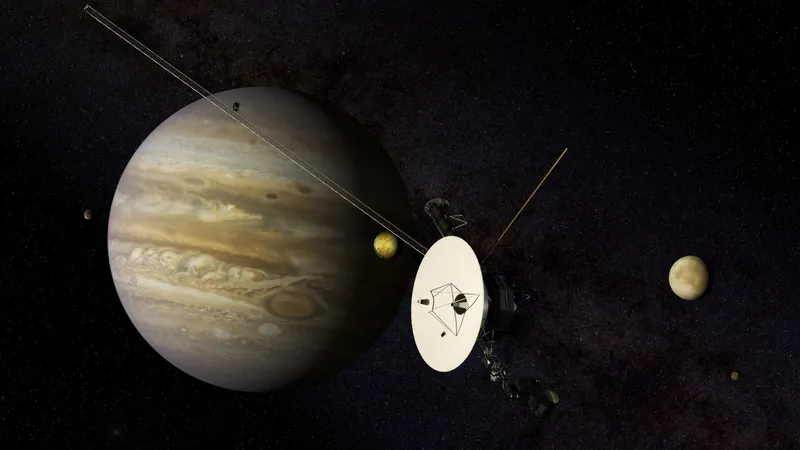
Blast from the Past: Voyager 2's Historic Encounter with Jupiter
2025-07-09
Author: John Tan
Voyager 2's Close Encounter with the Gas Giant
On July 9, 1979, NASA's Voyager 2 spacecraft made headlines as it zoomed within an astonishing 404,003 miles (650,180 kilometers) of Jupiter, marking a monumental milestone in space exploration.
A Groundbreaking Mission Begins
Launched in August 1977, the Voyager probes were initially set to investigate the giant gas planets, Jupiter and Saturn. Following the successful flyby of its twin, Voyager 1, in March 1979, Voyager 2 stepped up to the plate just a few months later, continuing the mission to unlock the mysteries of our solar system.
Revealing the Secrets of the Giant Planet
Equipped with an impressive array of scientific instruments including narrow- and wide-angle cameras, an interferometer, and a magnetometer, Voyager 2 pulled back the curtain on Jupiter like never before. It wasn't just a pretty face; the probe uncovered the truth behind the Great Red Spot, confirming it as a massive storm system. Additionally, it unveiled the planet's faint ring system, offering a new perspective on one of the solar system's most iconic entities.
Moons of Mystery: Discoveries That Shocked Scientists
But the real thrill came when Voyager 2 turned its gaze toward Jupiter's moons. The spacecraft confirmed active volcanism on Io, a moon that continues to amaze scientists, and captured high-resolution images of Europa that hinted at the tantalizing possibility of a hidden ocean beneath its icy surface.

 Brasil (PT)
Brasil (PT)
 Canada (EN)
Canada (EN)
 Chile (ES)
Chile (ES)
 Česko (CS)
Česko (CS)
 대한민국 (KO)
대한민국 (KO)
 España (ES)
España (ES)
 France (FR)
France (FR)
 Hong Kong (EN)
Hong Kong (EN)
 Italia (IT)
Italia (IT)
 日本 (JA)
日本 (JA)
 Magyarország (HU)
Magyarország (HU)
 Norge (NO)
Norge (NO)
 Polska (PL)
Polska (PL)
 Schweiz (DE)
Schweiz (DE)
 Singapore (EN)
Singapore (EN)
 Sverige (SV)
Sverige (SV)
 Suomi (FI)
Suomi (FI)
 Türkiye (TR)
Türkiye (TR)
 الإمارات العربية المتحدة (AR)
الإمارات العربية المتحدة (AR)